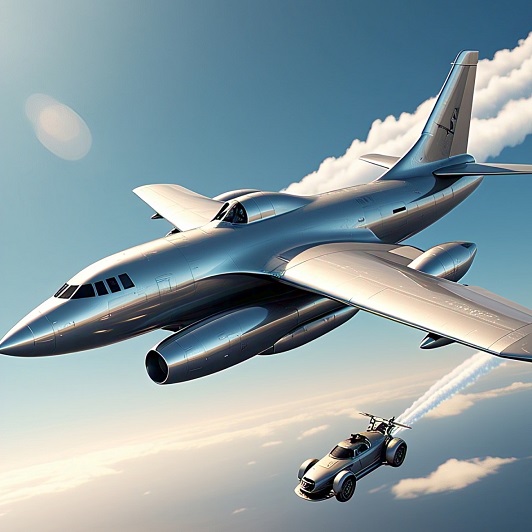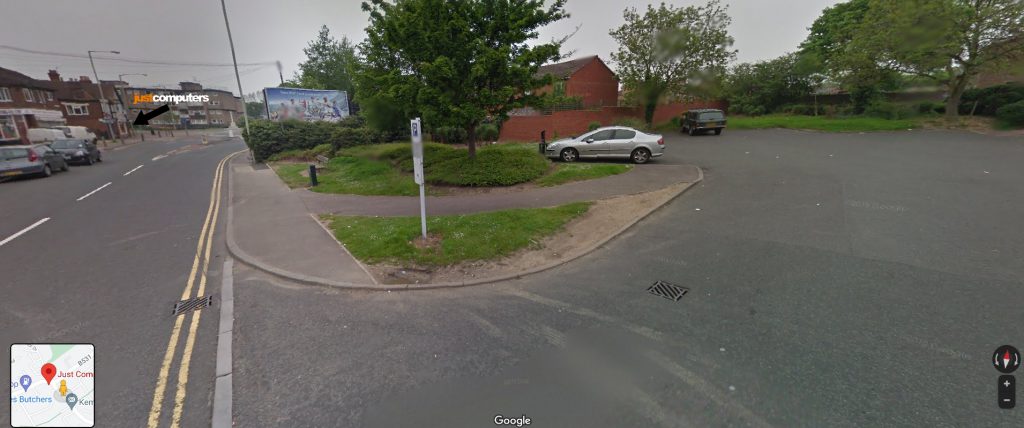
Two startups on opposite sides of the Atlantic have just unveiled breakthrough prototypes that could bring flying cars and hypersonic jets into everyday travel.
Hypersonic Air Travel and Flying Cars
Venus Aerospace has just tested a rocket engine it believes could make hypersonic passenger flights a reality, while Klein Vision has unveiled the production-ready version of the world’s first certified flying car.
Venus Aerospace Eyes Hypersonic Jet Travel
Houston-based Venus Aerospace made headlines last week with the first successful test flight of its Rotating Detonation Rocket Engine (RDRE), a propulsion system long theorised by engineers but unproven in flight – until now. The test, conducted at Spaceport America in New Mexico, marks a milestone in the company’s effort to develop Stargazer, a Mach 9-capable hypersonic aircraft that could one day fly from London to New York in under an hour.
The engine, described by Venus co-founder and CEO Sarah “Sassie” Duggleby as “the holy grail” of propulsion, works differently to traditional jet or rocket engines. Instead of burning fuel in a steady stream, the RDRE generates a series of controlled shockwave detonations that spiral around a circular chamber at supersonic speeds. This compact design produces more power, uses 20 per cent less fuel, and crucially, has no moving parts, thereby making it cheaper to build, operate, and maintain.
“We’ve proven that this technology works—not just in simulations or the lab, but in the air,” said Duggleby, who co-founded the company with her husband Andrew in 2020.
The recent test flight launched a small rocket to 4,400 feet, reaching 383 mph in just seven seconds, before descending safely by parachute. While that’s only about half the speed of sound, the company insists the trial was all about demonstrating scalability and real-world performance, not speed.
What Makes RDRE So Different?
Venus says the RDRE has the potential to revolutionise aerospace by enabling ultra-fast, cost-effective hypersonic travel across defence, commercial aviation, and space launch sectors. Traditional systems often rely on complex multi-engine configurations to operate across different speed regimes. Venus’s breakthrough is a single-engine solution that handles take-off, acceleration, and sustained hypersonic cruise.
In practical terms, the RDRE could, for example:
– Enable Mach 9 flight speeds (up to 6,900 mph)
– Carry passengers from San Francisco to Tokyo in only two hours!
– Reduce launch costs for satellites and cargo
– Deliver military-grade speed and agility in compact vehicles.
Funding and Support
With £66 million ($84m) in venture funding and support from NASA and the US Department of Defense, Venus is pushing forward with plans to flight-test a 20-foot drone at Mach 5 later this year. This will be followed by the development of Stargazer, a 150-foot-long, 150,000-lb aircraft designed to cruise at 170,000 feet, which is close enough to see the blackness of space and the curvature of Earth.
As Andrew Duggleby, the company’s CTO says: “This is just the beginning of what can be achieved with Venus propulsion technology”.
Challenges
However, despite the ambition and the confidence, it should be noted that there are some considerable challenges ahead. For example, engineers must solve the problem of extreme heat in the detonation chamber. This is what Sassie Duggleby likens to “lighting a fire in a wax fireplace without melting the wax.” The firm is also still years away from a full-scale passenger aircraft. This means that commercial readiness isn’t likely until the early 2030s.
Klein Vision Unveils Its AirCar 2 Flying Car
Meanwhile in Europe, Slovakia’s Klein Vision has taken a different route to next-gen travel. At this year’s Living Legends of Aviation Gala Dinner in Beverly Hills, the company revealed the production-ready prototype of the AirCar 2, a sleek vehicle that can transform from a car to an aircraft in just 80 seconds.
Unlike Venus, Klein Vision’s breakthrough is grounded (literally) in existing certification. The original AirCar, first flown in 2021, was awarded its Certificate of Airworthiness in 2022 after completing 170 flight hours and more than 500 takeoffs and landings.
“The AirCar fulfils a lifelong dream to bring the freedom of flight into the hands of everyday people,” said founder and designer Stefan Klein, who received the gala’s Special Recognition Award for Engineering Excellence.
The AirCar 2 is a major upgrade:
– 280-horsepower engine (replacing the previous 1.6-litre BMW engine)
– Cruising speed up to 250 km/h in flight
– 1,000 km range
– Full monocoque (single shell) body for improved safety and strength
– Compact enough to park in a standard garage.
Klein Vision claims the AirCar 2 can reach 200 km/h on the road, and take off from a conventional airport runway before cruising to its destination and driving off again, which means there’s no need for an entirely new transport infrastructure. A button in the cockpit unfolds the wings and tail, transforming the vehicle from road mode to air mode in less than 90 seconds.
A Car. A Plane. A Market Disruptor?
The company, which has been bootstrapped from the start, is now gearing up for production. According to co-founder Anton Zajac, the first models will retail for between $800,000 and $1 million starting in early 2026, with the ability to produce 100 units per year once certification is complete. It’s understood that pre-orders are already in progress.
Klein Vision’s ambitions are underpinned by bold market predictions. With global air mobility forecast to reach $162 billion by 2034, the company believes its vehicle has a first-mover advantage.
“We’re not just witnessing the future of transportation—we’re engineering it,” said Zajac.
Scepticism
However, some commentators are (understandably) sceptical about Klein Vision’s claims. For example, the flying car market has been promised for decades, and critics often point to limitations in infrastructure, regulation, cost, and public adoption. There’s also the challenge of power. While the current model runs on petrol, Klein Vision admits they plan to go electric “as soon as battery energy density allows.”
Also, with just seven people on staff, Klein Vision appears to be unusually lean for such a capital-intensive industry. The company spent $5 million developing the first AirCar, most of it funded by Zajac himself, though it is now “open to external investment.”
Different Paths, Same Sky
What makes this moment significant is not just the individual accomplishments of Venus Aerospace and Klein Vision, but the fact that two very different approaches (i.e. rocket-driven hypersonic flight and road-to-air transformation) are simultaneously reaching new levels of feasibility.
For example, one is reimagining how fast we can travel, while the other is changing how flexibly we move between ground and sky.
Although each faces enormous technical, regulatory, and financial obstacles, both appear to be making some credible progress, backed by data and test flights. It seems there’s now a growing sense that the next leap in mobility may come not from giant aerospace primes, but from agile, focused startups willing to bet on bold ideas and reinvent the rules.
What Does This Mean For Your Business?
These two announcements feel like a genuine turning point in aviation’s long evolution from commercial airliners to something altogether more ambitious, and more personal. Whether it’s Venus Aerospace’s promise of New York to Tokyo in under an hour, or Klein Vision’s vision of driving to the airport and flying yourself to your next meeting, both represent a dramatic departure from the limits of traditional air travel. Also, for a sector that hasn’t seen many transformative passenger-facing breakthroughs since Concorde, this sudden surge in innovation feels both overdue and quite exciting.
For UK businesses, hypersonic travel, if it becomes commercially viable, could create a new level of global agility for finance, tech, and trade sectors, shrinking long-haul logistics and giving British firms the ability to meet clients or partners halfway across the world in the space of a lunch break. Also, a certified flying car like the AirCar 2 could, in time, reshape regional mobility by unlocking point-to-point travel for executives, engineers, or consultants who currently rely on slower rail or road connections. The early costs may be high, but as production scales and competition grows, accessibility may follow.
Of course, there are still some big questions, especially around safety, certification, regulation, and infrastructure. In both cases, it’s not yet clear how existing aviation authorities will adapt to technologies that blur the lines between car and aircraft, or jet and rocket. Also, public acceptance and use will also hinge on reliability, insurance frameworks, pilot licensing, and in the case of hypersonic flight, whether everyday passengers can truly stomach the physics involved.
Then there’s the competitive landscape to consider. For example, as Venus pushes to commercialise RDRE-powered jets, it enters a growing field of rivals including Hermeus, Sierra Space, and Virgin Galactic, all with overlapping ambitions. Similarly, Klein Vision must prove it can scale manufacturing, meet regulatory expectations, and fend off future entrants with better-funded teams or deeper aviation experience.
However, even with these challenges, the pace and credibility of recent progress seems to suggest that this may no longer be a question of if, but when. The fact that two very different technologies, i.e., one focused on blistering speed, the other on personal freedom, are both edging closer to commercial reality shows that the sky is no longer the limit. The travel industry may be on the cusp of a transformation that doesn’t just shrink time and distance, but redefines how we connect with the world. And that’s a future well worth watching.




